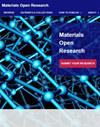通过溶胶-凝胶燃烧法合成和优化用于环境修复的铈变体
引用次数: 0
摘要
该研究深入全面地探讨了铈纳米粒子的合成,明确侧重于不同的变体:富燃料、缺燃料和化学计量比例。采用溶胶-凝胶燃烧法对这些铈变体进行了细致的研究,以揭示它们的独特特性。化学计量铈的优异性能尤其引人注目,因为它具有明确的晶体结构和均衡的元素组成。相反,缺乏燃料和富含燃料的铈变体则因其氧铈比的变化而显示出不同的晶格结构。这项研究通过平板膜合成法,将这些变体的纳米铈颗粒加入到聚偏二氟乙烯(PVDF)聚合物膜中,用于水处理。不同铈变体的表面电荷和电子空位在水净化和乳液分离中发挥着重要作用。利用铈改性膜各自的特性,对其在通量、回收率和可重复使用性方面的性能进行了系统评估。与原始膜相比,化学合成铈掺杂膜的油水分离效率和可重复使用性是原始膜的 1.7 倍,表现出卓越的性能。因此,铈纳米粒子膜可用于水污染物的可持续环境修复。本文章由计算机程序翻译,如有差异,请以英文原文为准。
Synthesis and optimization of ceria variants via sol-gel combustion method for environmental remediation
The study delves into the comprehensive exploration of ceria nanoparticle synthesis, explicitly focusing on distinct variants: fuel-rich, fuel-deficient, and stoichiometric proportions. These ceria variants are meticulously investigated using the sol-gel combustion method to uncover their unique characteristics. The exceptional performance of stoichiometric ceria is particularly notable, as it exhibits a well-defined crystal structure and balanced elemental composition. Conversely, fuel-deficient and fuel-rich ceria variants display altered lattice structures due to variations in their oxygen-to-cerium ratios. The study extends to the incorporation of these variants of ceria nanoparticles into PVDF polymeric membranes by flat sheet membrane synthesis for water application. The different ceria variant’s surface charges and electronic vacancies play a significant role in water purification and emulsion separation. Capitalizing on their individual properties, ceria-modified membranes are systematically evaluated, for membrane performance in terms of flux, recovery ratio and reusability. Stoichiometric ceria-incorporated membranes emerge as superior performers with 1.7x oil-water separation efficiency and reusability compared to pristine membranes. Therefore, ceria nanoparticle incorporated membrane can be used for sustainable environmental remediation of pollutants from the water.
求助全文
通过发布文献求助,成功后即可免费获取论文全文。
去求助
来源期刊

Materials Open Research
materials science-
自引率
0.00%
发文量
0
期刊介绍:
Materials Open Research is a rapid open access publishing platform for a broad range of materials science research. The platform welcomes theoretical, experimental, and modelling approaches on the properties, characterization, design, structure, classification, processing, and performance of materials, and their applications. The platform is open to submissions from researchers, practitioners and experts, and all articles will benefit from open peer review.
Materials research underpins many significant and novel technologies which are set to revolutionize our society, and Materials Open Research is well-suited to ensure fast and full access to this research for the benefit of the academic community, industry, and beyond.
The platform aims to create a forum for discussion and for the dissemination of research in all areas of materials science and engineering. This includes, but is not limited to, research on the following material classes:
● Biomaterials and biomedical materials
● Composites
● Economic minerals
● Electronic materials
● Glasses & ceramics
● Magnetic materials
● Metals & alloys
● Nanomaterials and nanostructures
● Polymers
● Porous materials
● Quantum materials
● Smart materials
● Soft matter
● Structural materials
● Superconducting materials
● Thin films
Materials Open Research also focuses on a range of applications and approaches within materials science, including but not limited to:
● Additive manufacturing
● Computational materials & modelling
● Materials in energy & the environment
● Materials informatics
● Materials synthesis and processing
In addition to original Research Articles, Materials Open Research will feature a variety of article types including Method Articles, Study Protocols, Software Tool Articles, Systematic Reviews, Data Notes, Brief Reports, and Opinion Articles. All research is welcome and will be published irrespective of the perceived level of interest or novelty; we accept confirmatory and replication studies, as well as negative and null results.
Materials Open Research is an Open Research Platform. All articles are published open access under a CC-BY license and authors benefit from fully transparent publishing and peer review processes. Where applicable, authors are asked to include detailed descriptions of methods and will receive editorial guidance on making all underlying data openly available in order to improve reproducibility. The platform will also provide the option to publish non-peer reviewed materials including technical reports, training materials, posters, slides, and other documents.
 求助内容:
求助内容: 应助结果提醒方式:
应助结果提醒方式:


